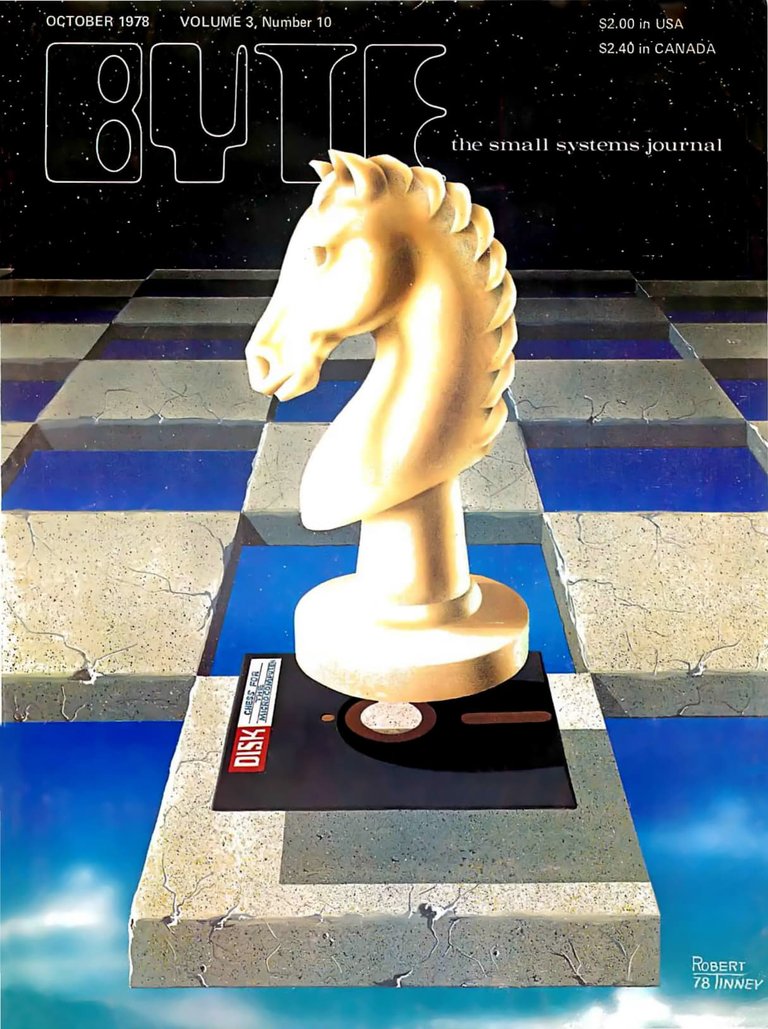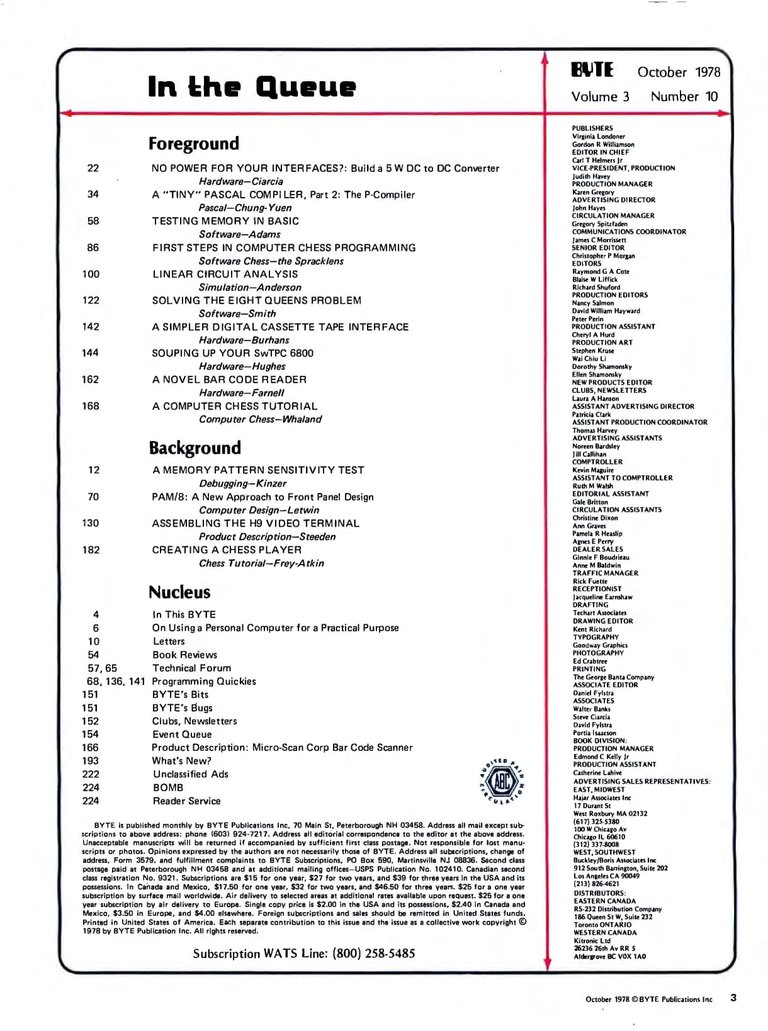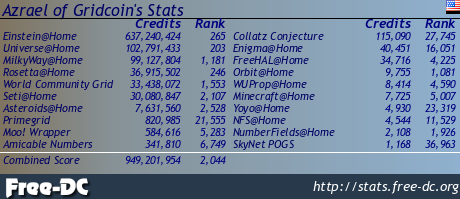Byte (October 1978)

Cover of the October 1978 issue of Byte
Byte was a long running computer magazine published between the late 1970s and the early 1990s. This issue is "only" around 200 pages but it grew quickly and some issues reached 500 pages and more. The October 1978 issue would have hit the stands almost exactly 46 years ago and includes:
Foreground
- No Power For Your Interfaces? - Instructions for building a 5 watt DC to DC converter designed to power add-on boards.
- A "Tiny" Pascal Compiler, Part 2: The P-Compiler - The second part in a series on creating a Pascal compiler.
- Testing Memory in BASIC - A BASIC program for testing memory (other than the 8K it is loaded in).
- First Steps in Computer Chess Programming - A tutorial for creating a chess program using Sargon as an example.
- Linear Circuit Analysis - An article that presents the fundamentals of a frequency domain linear circuit analysis program. This article gives you flow charts and mathematical equations but you have to write your own program.
- Solving The Eight Queens Problem - The eight queens problem is a chess puzzle the object of which is to place eight queens on an 8x8 chess board in such a way that no queen can take another. This article presents multiple ways for solving the problem.

Table of Contents from the October 1978 issue of Byte
Background
- A Memory Pattern Sensitivity Test - An assembly language program that detects pattern sensitivity related errors in memory. These are errors that occur when accessing one area of memory alters another memory location when it contains a certain pattern of bits.
- PAM/8: A New Approach to Front Panel Design - An article on the design of the front panel firmware of the Heath H8 computer. Of course, the idea of front panels as such would rapidly become obsolete.
- Assembling The H9 Video Terminal - A terminal was essentially a monitor and keyboard assembly that connected to computers via a serial interface. If you wanted a video display and keyboard input in the early days of computers then this is how it was done. You could buy a terminal fully assembled but given the cost of computer equipment at a time it was common to be able to buy stuff in kit format and assemble it yourself for significant savings. This tutorial covers assembling the H9 Video Terminal which was designed as an accessory for the Heathkit H8 computer though I'm sure it could be used with other machines.
Nucleus
- On Using a Personal Computer for a Practical Purpose - Practical uses for an Apple II in Byte offices includes analyzing reader survey information.
- Letters - Letters from readers about modular programming, the TRS-80, a KIM-1 timer, resetting the SwTPC 6800, personal computer insurance, and more.
- Book Reviews - A review of Microprocessor Programming for Computer Hobbyists by Neil Graham.
- Technical Forum - Discussions on the discovery and use of undocumented op codes and analog computers.

Back cover of the October 1978 issue of Byte
Read more: https://www.megalextoria.com/wordpress/index.php/2024/09/07/byte-october-1978/
Check out my other Social Media haunts (though most content is links to stuff I posted on Hive or reposts of stuff originally posted on Hive):
Wordpress: https://www.megalextoria.com/wordpress
Tumblr: https://www.tumblr.com/blog/darth-azrael
Twitter: https://twitter.com/Darth_Azrael
Blogger: https://megalextoria.blogspot.com/
Odyssee: https://odysee.com/@Megalextoria:b
Rumble: https://rumble.com/c/c-2385054
Daily Motion: https://www.dailymotion.com/Megalextoria
Books I am reading or have recently read:
Fallen Founder: The Life of Aaron Burr by Nancy Isenberg
Tom Clancy's Op-Center: God of War by Jeff Rovin
Republic of Thieves by Scott Lynch
Mine Monero in your browser!
Earn Gridcoin while also helping various scientific projects by sharing your computer's idle CPU time!
